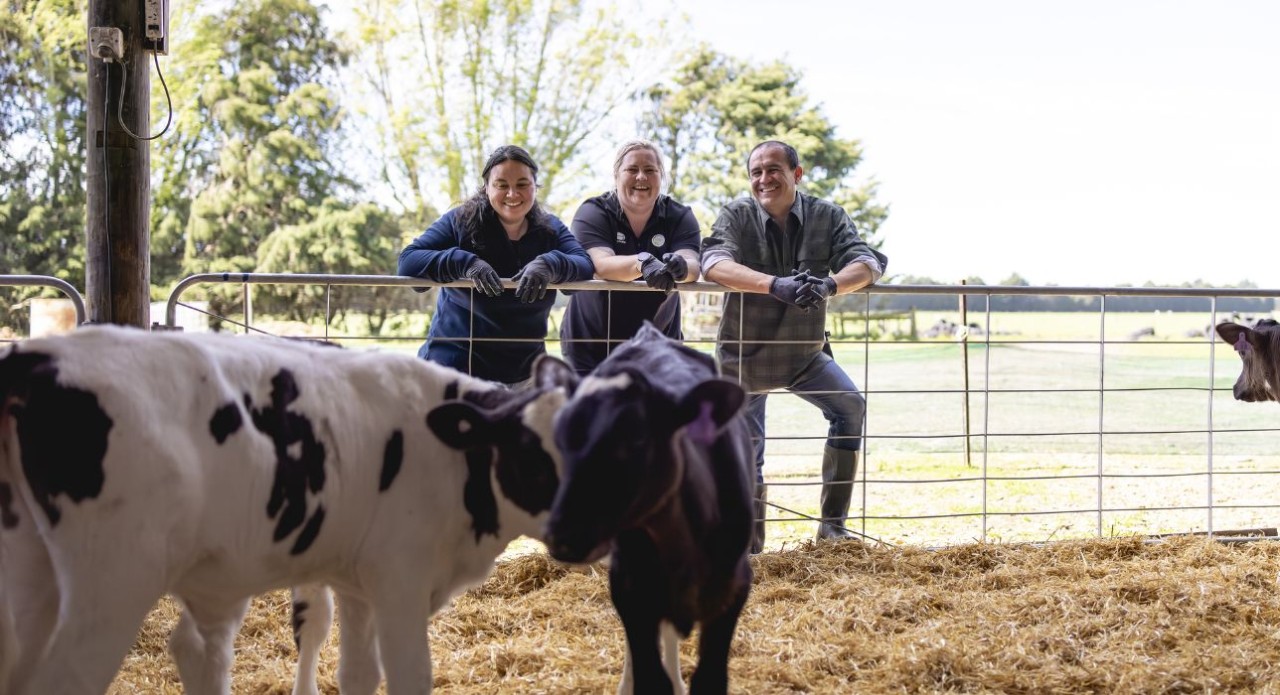A calf’s first drink of colostrum milk can set it up for life.
The first milking (“gold colostrum”, named after the colour of the milk) contains essential antibodies to protect calves from disease. At birth, calves’ immune systems are not fully developed and these antibodies are crucial. If they don’t get enough colostrum (“failure of passive transfer”) they are at higher risk of disease and death.
Without blood tests, it is impossible to tell if your calves achieve a “successful transfer of immunity”. A study in 2015 of more than 3,800 calves across 107 farms found a third had failure of passive transfer1.
To ensure calves get the best start, focus on the three Qs of colostrum:
Quickly
Once a calf is born there is a 24-hour window for a successful transfer of immunity via high-quality colostrum. This is for two reasons:
- The calf’s ability to absorb antibodies declines and after around 24 hours they won’t get any antibody transfer from the colostrum. Colostrum can still provide other benefits, but the immunity window has closed.
- As soon as the cow has calved, the antibody levels in the milk rapidly decline. The fresher the colostrum and faster the calf is fed, the stronger the chance of a successful transfer of immunity.
Quantity
Calves should be fed 2 litres of gold colostrum as soon as possible, followed by another 2 litres later in the day. Ideally, all calves will be fed 4-6 litres of colostrum within their first 12 hours of life. However, because a calf can only hold about 1.5 to 2 litres in its abomasum (fourth stomach), two feeds within the first 12 hours should be the target.
Quality
Not all colostrum is equal. Determine the best quality colostrum for your newborn calves by using a Brix refractometer. These are inexpensive and simple to use and let you ensure that calves are offered the best quality colostrum.
Pooling colostrum together and storing it in the same container is common practice in New Zealand. While this helps provide a broader range of antibodies for calves to ingest, there is a risk of mixing high-quality colostrum with colostrum that isn’t quite as good, diluting the overall quality. If you are going to pool your gold colostrum, test it first and store it accordingly, by keeping your high-quality colostrum in one storage unit and your poorer-quality colostrum in another.
Since there is so much natural variation among calving cows, bringing freshly calved cows in twice a day allows you to get the best quality colostrum.
To check whether your colostrum management system is working and to ensure that your calves are getting the immunity transfer they need for the best start to life, talk to your local vet.
1 Cuttance et al. 2017. “Prevalence and calf-level risk factors for failure of passive transfer in dairy calves in New Zealand” in NZ Vet Journal. 2017 Nov; 65(6):297-304.
